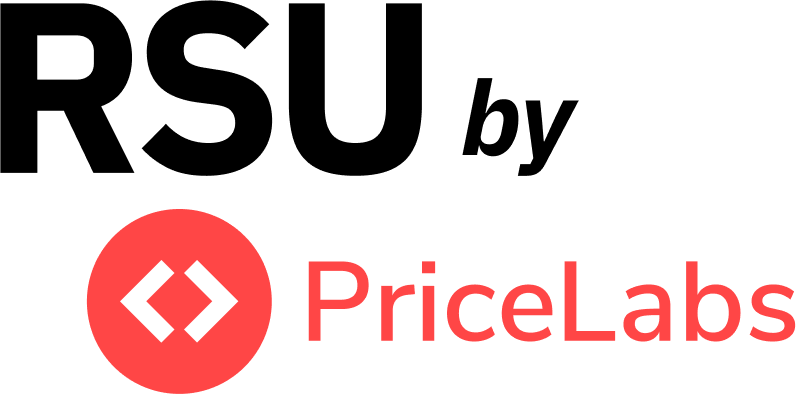Seeing bookings trickle in for Summer 2025—but feeling like more demand must be out there?
You’re not imagining things. As we head into high season, demand patterns are shifting fast. Local events can cause sudden spikes, booking windows have shortened in many markets, and even a rainy weekend can throw off your entire calendar.
To help short-term rental property managers plan smarter, no matter where they operate, we hosted a live webinar in collaboration with RevLabs by PriceLabs. While the insights come from speakers in both the U.S. and the U.K., the takeaways reflect a mix of urban and regional dynamics, making them highly applicable across global markets.
- Jane Mack, Senior Account Manager at Your AirHost, London
- Brian Hatcher, Founder of Hatch Capital, Atlanta
- Kyle Driskell, Senior Solutions Consultant at PriceLabs
This article recaps the full discussion, packed with actionable advice, real-life examples, and tactics you can use right now to stay booked and profitable all summer long.
What Are Property Managers Seeing for Summer 2025—and What Can You Do?
We began by asking: What’s the demand landscape looking like in your market?
- In the U.S. Southeast, Brian Hatcher reported strong demand: longer booking windows, higher ADRs, and extended stays. His team relies on tools like PriceLabs, Key Data, and Rankbreeze to stay ahead—and the data shows that early planning is paying off.
- Jane Mack offered a view from London, where short stays dominate, even in peak season. June and July are pacing similarly to last year, but August is already looking stronger.
- Kyle Driskell brought a broader U.S. lens, noting that drive-to markets are strong, but international travel hotspots like Orlando and NYC are seeing softness, particularly right after July 4th.
What Should Property Managers Do?
- Know your lead times: Larger homes often book 60–90 days out; studios may fill within a week.
- Stay flexible: Your guests may not want a full week—match your minimum stays to their booking habits.
- Watch your pacing: Use tools like PriceLabs to spot dips after major holidays and adjust proactively.
How Should Property Managers Prepare for Summer 2025?
Jane and Brian agreed: pricing and availability are where it all starts.
In London, Jane’s team keeps rules flexible and checks PriceLabs throughout the week to monitor gaps. In Atlanta, Brian builds hyper-local comp sets in PriceLabs, comparing pacing, ADRs, and stay rules to nearby listings.
“If you’re not adjusting manually, you’re missing signals the algorithm might not catch,” Brian said.
Kyle added a critical reminder:
“Don’t treat pricing tools like magic. You’ve still got to log in, review your data, and act on what you’re seeing.”
They also emphasized seasonality beyond pricing. Jane updates her listings’ photos to showcase summer perks, like patios and outdoor furniture. Brian includes pool shots and asks guests why they’re booking, often uncovering demand linked to local events or group travel.
What Should Property Managers Do?
- Align pricing and stay rules with actual guest behavior – Don’t rely on assumptions. Check your market’s stay patterns and booking trends regularly.
- Use your pricing tools actively – Log into PriceLabs at least twice a week to monitor gaps, adjust rates, and respond to real-time market signals.
- Update listings for the season – Highlight summer-specific amenities (e.g., pools, patios) in your listings.
Once pricing is in place, property managers must turn their attention to how long guests are staying—and when they’re booking.
How to Set Smarter Minimum Stays and Match Booking Windows to Guest Behavior
Minimum stay rules shouldn’t be static. Brian’s team uses 3-night minimums for weekends booked 60+ days out, then reduces them if those nights remain open.
In London, Jane shared that guests often book within 2–6 days of arrival, so her team keeps minimums short year-round. Kyle reminded that booking behavior depends heavily on property type and market.
“A downtown studio isn’t the same as a beachfront 5-bed. Match your strategy to your listing,” Kyle said.
What Should Property Managers Do?
- Use dynamic minimum stays based on booking lead time: Set longer minimums (like 3 nights) further out, and reduce them as the stay date gets closer to fill gaps and boost occupancy.
- Match stay rules to property type and guest behavior: Studios in cities may need short, flexible stays. Larger homes may book earlier and stay longer—adjust accordingly.
- Use PriceLabs’ Neighborhood Data tab: Property managers can check what other listings are doing: stay lengths, booking windows, and upcoming demand trends.
How to Find and Capitalize on Local Event Demand
Hyper-local events like sports tournaments, food fests, or niche conferences—can drive bookings that OTAs don’t always detect in time.
“You’d be surprised what fills a calendar—cheer competitions, craft fairs. We raise rates early when we spot those.” Brian added.
He also recommends partnering with local venues to access event calendars and offer lodging. Jane suggested joining local Facebook groups to catch early chatter around community events.
What Should Property Managers Do?
- Ask guests: Track reasons to identify repeatable local events you can plan around.
- Get involved locally: Partner with venues or follow community calendars to spot demand early.
- Act on early signals: Use manual pricing overrides when you know an event is coming, even if the data hasn’t caught up yet.
How to Handle Bad Weather Without Losing Bookings
Summer isn’t always sunshine. Jane, Brian, and Kyle shared their go-to strategies for turning bad weather into good experiences (and still filling nights).
Jane recommends messaging guests proactively when poor weather is forecast.
Jain said, “We tell them what to pack, where to go on a rainy day, and leave umbrellas and board games in the house.” She even includes a “Things to Do on a Rainy Day” guide in the house manual.
Brian emphasized the power of indoor amenities, especially when outdoor plans fall apart. His team also promotes travel insurance with affiliate links—protecting guests while generating extra revenue.
Kyle’s advice: if weather impacts demand, use short-term PriceLabs overrides to drop rates slightly and boost OTA visibility, helping to fill soft weekends.
What Should Property Managers Do?
- Message guests proactively when bad weather is forecast—offer helpful local tips to ease concerns.
- Balance outdoor and indoor amenities to make your listing weather-resilient.
- Adjust pricing smartly during slow weekends—use PriceLabs overrides to stay competitive and visible.
Common Mistakes to Avoid This High Season
The panel shared a few pitfalls they still see even experienced operators fall into:
1. Treating pricing tools as “set it and forget it”
Mentioned by Brian Hatcher
Many managers rely too heavily on automation and fail to make manual adjustments—even when local events or sudden demand changes aren’t picked up by the software.
2. Not loading future season prices early enough
Mentioned by Jane Mack
Some property managers forget to price dates like summer 2026, missing out on repeat guests who book far in advance.
3. Only focusing on near-term dates instead of booking windows
Mentioned by Kyle Driskell
Managers often fixate on this month’s occupancy instead of looking 60–90 days ahead—especially for larger homes.
4. Ignoring pickup trends and market pacing data
Highlighted by Kyle Driskell
Not reviewing 7-day pickup metrics or pacing against last year leaves you blind to soft spots or surges in demand.
5. Getting too busy to revisit pricing and marketing strategy
Shared by Jane Mack
Operational overwhelm—like constant guest turnover—can distract managers from updating pricing, listing content, or planning.
Final Thoughts
This summer, success isn’t just about pricing for peak weekends—it’s about staying nimble, reading your data, and preparing for what others miss. Whether it’s a rainy forecast, a surprise event, or a quiet Monday.
Snigdha Parghan is a Content Marketer at RSU by PriceLabs, where she creates articles, manages daily social media, and repurposes news and analysis into podcasts and video content for short-term rental professionals. With a focus on technology, operations, and marketing, Snigdha helps property managers stay informed and adapt to industry shifts.








